I am trying to calculate percentiles or quantils for data which considerably scatter. Using the Loess function the mean is nicely presented, however, I cannot get percentile/quantils from this function.
I tried to combine quantreg with loess. This plot shows linear curves instead of loess smoothed curves.
I would like to get a result similar to this:

data(cars)
plot(cars)
lmodel <- loess(cars$dist~cars$speed,span = 0.3, degree = 1)
lpred<-predict(lmodel, newdata= 5:25,se=TRUE)
lines(5:25, lpred$fit,col='#000066',lwd=4)
lines(5:25, lpred$fit - qt(0.975, lpred$df)*lpred$se, lty=2)
lines(5:25, lpred$fit + qt(0.975, lpred$df)*lpred$se, lty=2)
#### combination of quantreg with loess
plot(cars$speed,cars$dist)
xx <- seq(min(cars$speed),max(cars$speed),1)
f <- coef(rq(loess(cars$dist~cars$speed,span = 0.3, degree = 1), tau=c(0.1,0.25,0.5,0.75,0.9)) )
yy <- cbind(1,xx)%*%f
for(i in 1:length(taus)){
lines(xx,yy[,i],col = "gray")
}
I also tried the suggested code, however, I could not change the settings of the smoothing. The lines showed wavy path.
library(quantreg)
data(cars)
taus <- c(0.1, 0.25, 0.5, 0.75, 0.9)
lmodel <- loess(dist ~ speed, data = cars, span = 0.9, degree = 1)
rqmodel <- rq(lmodel, tau = taus, data = cars)
f <- coef(rqmodel)
xx <- seq(min(cars$speed), max(cars$speed), length.out = nrow(cars))
yy <- predict(rqmodel)
plot(cars)
matlines(xx, yy, col = "grey",lwd=3)
The Loess function does not provide data for quantiles as the rg would.
However, the Loess functions allows to get a curve without zigzag. Please see the code snip. What would be the setting for tau=0.5 using the rg function to produce the same results compared with Loess function.
data(cars)
lmodel <- loess(dist ~ speed, data = cars, span = 0.9 )
plot(cars)
lines( x=4:25 , y=predict(lmodel, newdata= data.frame(speed=4:25)) ,col="Blue")




